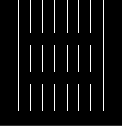J.M.Pearce (talk | contribs) |
J.M.Pearce (talk | contribs) m (→See Also) |
||
| (7 intermediate revisions by the same user not shown) | |||
| Line 1: | Line 1: | ||
{{MOST}} | {{MOST}} | ||
{{Pearce-pubs}} | |||
[[Category:Energy conservation]] | [[Category:Energy conservation]] | ||
| Line 7: | Line 8: | ||
== Expanded microchannel heat exchanger: design, fabrication and preliminary experimental test == | == Expanded microchannel heat exchanger: design, fabrication and preliminary experimental test == | ||
[[image:Hxclose.png|right]] | [[image:Hxclose.png|right]] | ||
Source: David C. Denkenberger, Michael J. Brandemuehl, Joshua M. Pearce, and John Zhai, “Expanded microchannel heat exchanger: design, fabrication and preliminary experimental test”, ''Proceedings of the Institution of Mechanical Engineers – Part A: Journal of Power and Energy'', '''226''', 532-544 (2012). DOI: http://dx.doi.org/10.1177/0957650912442781 [http:// | Source: David C. Denkenberger, Michael J. Brandemuehl, Joshua M. Pearce, and John Zhai, “Expanded microchannel heat exchanger: design, fabrication and preliminary experimental test”, ''Proceedings of the Institution of Mechanical Engineers – Part A: Journal of Power and Energy'', '''226''', 532-544 (2012). DOI: http://dx.doi.org/10.1177/0957650912442781 [http://www.academia.edu/1604345/Expanded_microchannel_heat_exchanger_design_fabrication_and_preliminary_experimental_test Full text open access] | ||
{{Statusboxtop}} | |||
{{status-design}} | |||
{{status-model}} | |||
{{status-prototype}} | |||
You can help Appropedia by contributing to the next step in this [[OSAT]]'s [[:Category:Status|status]]. | |||
{{boxbottom}} | |||
=== Abstract === | === Abstract === | ||
| Line 14: | Line 21: | ||
==See Also== | ==See Also== | ||
* [[Experimental Characterization of Heat Transfer in an Additively Manufactured Polymer Heat Exchanger]] | |||
* [[Towards Low-Cost Microchannel Heat Exchangers: Vehicle Heat Recovery Ventilator Prototype]] | |||
* [[Open source laser system for polymeric welding]] | * [[Open source laser system for polymeric welding]] | ||
* [[Laser welding protocol: MOST]] | * [[Laser welding protocol: MOST]] | ||
*[[Open Source Laser Polymer Welding System: Design and Characterization of Linear Low-Density Polyethylene Multilayer Welds]] | |||
==In the news== | |||
* Better Heat Exchangers Using Garbage Bags - [http://www.sciencedaily.com/releases/2015/06/150626130716.htm Science Daily], [https://lockerdome.com/6301844049758273/7799861466629140 Locker Dome], [http://www.rdmag.com/news/2015/06/better-heat-exchangers-using-garbage-bags R&D Magazine] | |||
*[http://www.mumbaimirror.com/others/sci-tech/Garbage-bags-could-make-power-plants-more-efficient/articleshow/47871516.cms Garbage bags could make power plants more efficient] - Mumbai Mirror (a daily circulation of approximate 700,000). | |||
Revision as of 02:02, 10 November 2016
Expanded microchannel heat exchanger: design, fabrication and preliminary experimental test

Source: David C. Denkenberger, Michael J. Brandemuehl, Joshua M. Pearce, and John Zhai, “Expanded microchannel heat exchanger: design, fabrication and preliminary experimental test”, Proceedings of the Institution of Mechanical Engineers – Part A: Journal of Power and Energy, 226, 532-544 (2012). DOI: http://dx.doi.org/10.1177/0957650912442781 Full text open access
Template:Statusboxtop Template:Status-design Template:Status-model Template:Status-prototype You can help Appropedia by contributing to the next step in this OSAT's status. Template:Boxbottom
Abstract
This paper first reviews non-traditional heat exchanger geometry, laser welding, practical issues with microchannel heat exchangers, and high effectiveness heat exchangers. Existing microchannel heat exchangers have low material costs, but high manufacturing costs. This paper presents a new expanded microchannel heat exchanger design and accompanying continuous manufacturing technique for potential low-cost production. Polymer heat exchangers have the potential for high effectiveness. The paper discusses one possible joining method - a new type of laser welding named "forward conduction welding," used to fabricate the prototype. The expanded heat exchanger has the potential to have counter-flow, cross-flow, or parallel-flow configurations, be used for all types of fluids, and be made of polymers, metals, or polymer-ceramic precursors. The cost and ineffectiveness reduction may be an order of magnitude or more, saving a large fraction of primary energy. The measured effectiveness of the prototype with 28 micron thick black low density polyethylene walls and counterflow, water-to-water heat transfer in 2 mm channels was 72%, but multiple low-cost stages could realize the potential of higher effectiveness.
See Also
- Experimental Characterization of Heat Transfer in an Additively Manufactured Polymer Heat Exchanger
- Towards Low-Cost Microchannel Heat Exchangers: Vehicle Heat Recovery Ventilator Prototype
- Open source laser system for polymeric welding
- Laser welding protocol: MOST
- Open Source Laser Polymer Welding System: Design and Characterization of Linear Low-Density Polyethylene Multilayer Welds
In the news
- Better Heat Exchangers Using Garbage Bags - Science Daily, Locker Dome, R&D Magazine
- Garbage bags could make power plants more efficient - Mumbai Mirror (a daily circulation of approximate 700,000).





